Is Amber Really Made From Tree Sap?
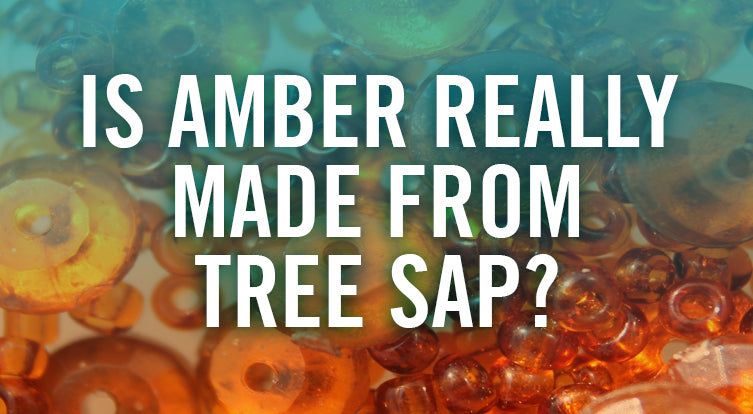
Ever since I saw that mosquito encased in amber at the tip of Dr. Hammond's cane at the beginning of Jurassic Park many decades ago, I've been fascinated by the stuff. Organic gems have always interested me to some degree. Amber is a cut above simply because of long it takes to develop. The amazing honey cognac color that comes from real amber jewelry is an extremely rare one.
Amber can look amazingly striking with a wide range of outfits, but is amber really made from tree sap? We will cover exactly where amber comes from and the scientific processes that it goes through in order to become a wearable piece of jewelry. Additionally, we will discuss colors and pricing. Finally, we will include some care and maintenance tips to keep that amber jewelry looking great!
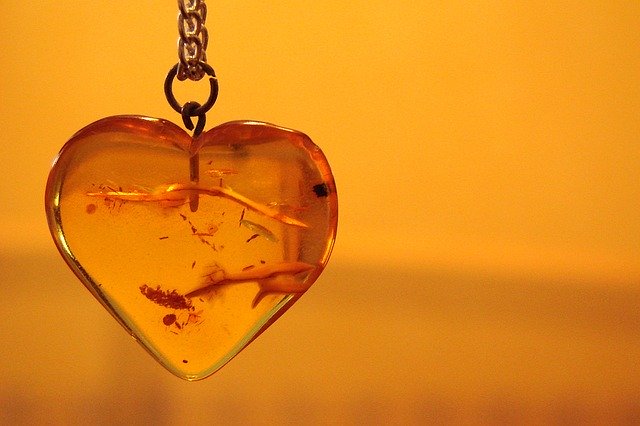
Caring for Amber Jewelry
Amber is exceptionally sensitive, as most organic gems tend to be. You won't ever want to go to town with corrosive jewelry polish. Things that diamonds can easily weather can end up disintegrating your amber gem into a pile of honey-colored crumbs. Simple Shine's complete gentle jewelry cleaning kit and/or gentle jewelry cleaning foamer will keep your amber clean and is guaranteed non-corrosive and safe for even the most sensitive gems.
Apart for cleaning, amber is easily scratched or broken so it will need to be treated with a lot of extra care. If you can find some amber jewelry that is set deeply into the jewelry, that can go a very long way in providing some extra protection. You can find plenty of amber jewelry that isn't contained in any sort of setting, and while I wouldn't buy it for myself it's certainly pretty and will last for a very long time if treated carefully.
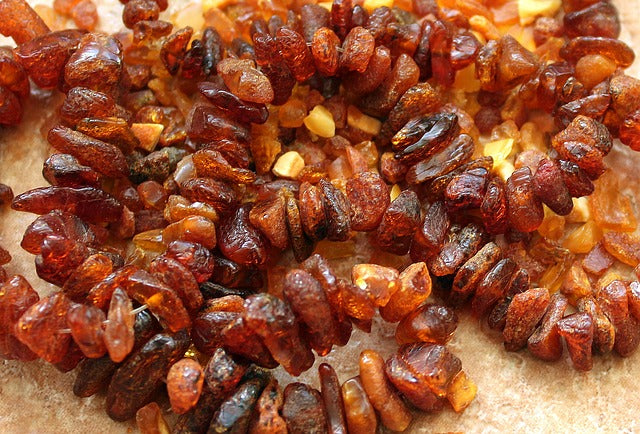
Is Amber Really Made From Tree Sap?
Well, the quick and easy answer to what amber is made of is "not tree sap". I can see where that misconception might originate, as it does look remarkably similar but there is a marked difference between tree sap and tree resin. Sap is mostly water and will quickly be absorbed into the Earth if left to sit, so amber is actually made of tree resin. The resin in trees is much thicker than sap and can visibly stick around for a much longer time than the more watery sap that we commonly see.
Scientists have had some disagreement over whether tree resin is a waste byproduct of the tree, or simply a mechanic for defense from insects, fungi, and pathogens or other unwanted guests. It also seems to be useful in repairing damage to the tree. My theory is: Why not all of the above? While sap moves through the tree's vascular tissues to keep it turgid (i.e. not wilted) the resin remains in place, providing at least a small modicum of defense.
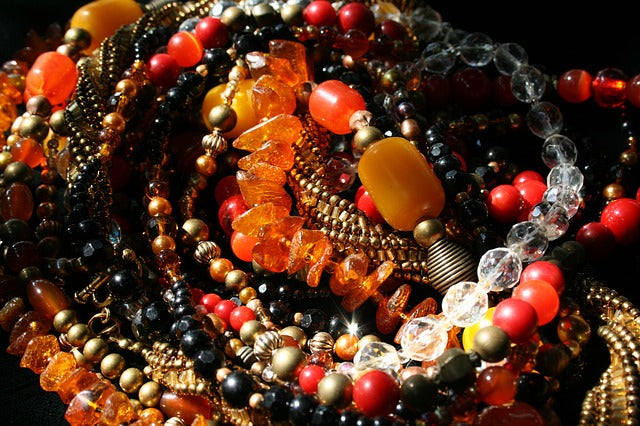
Do All Trees Produce Resin?
While all trees on the planet produce sap in one form or another, resin is only utilized by a select few species. These are all trees that belong to the family Pinaceae, such as firs, cedars, and of course pine trees. Obviously this cuts down quite a lot on the amount of resin that is readily available in most areas of the world, which only increases the value of that rare resin when it meets the specific conditions needed for it to actually fossilize into amber.
The Pinaceae family of trees as we know them haven't been around long enough to produce any actual amber. Jelinite or 'Kansas amber' seems to be produced by a tree of the Araucariaceae with was actual a coniferous plant from the Mesozoic Era. It was one of the most successful plants of the time and was found almost worldwide during the Jurassic and Cretaceous periods.
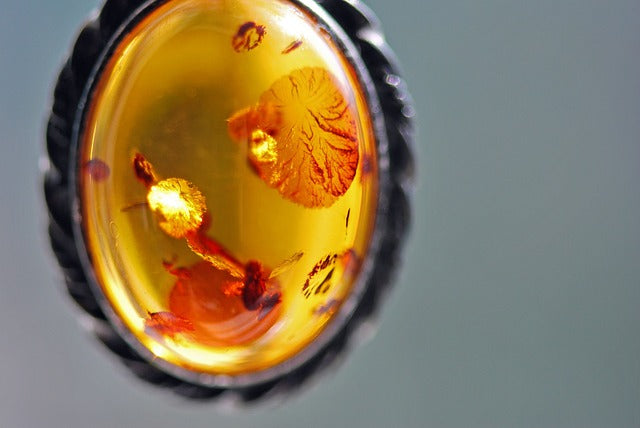
How Is Amber Formed?
Now we're getting into the meat of things. When a tree dies it leaves behind resin. Chemically, this resin is a complex mixture of mono-, di-, sesqui-, and triterpenoids. The volatile terpenoid fractions in resin tend to evaporate or otherwise dissipate under normal forest conditions. The non-volatile fractions are left behind to become fossilized if they can withstand degradation and deposition.
In much simpler terms, amber is formed as a result of resin that becomes fossilized. This process can take millions of years and requires very specific conditions for that fossilization to even take place. The timeline for this process hasn't been officially established. Suffice to say that it takes a very long time, as most things on a geological timeline tend to. Most amber is found within Cretaceous and Tertiary sedimentary rocks that are roughly 30-90 million years old.
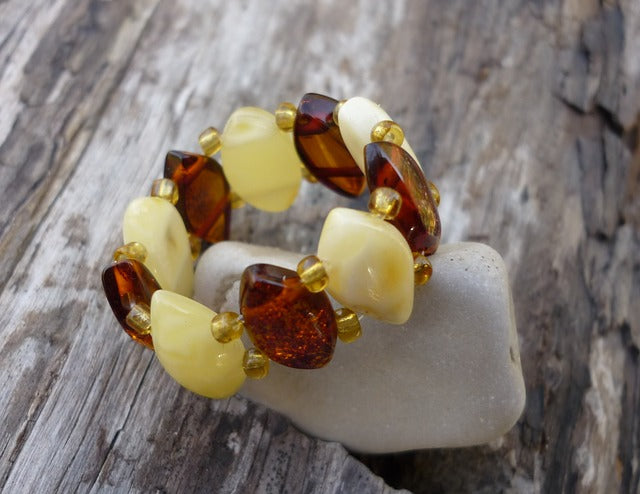
Kinds and Colors
What color is real amber? Well, there is no one true answer. Colors of amber can be just as varied as the species amber can come from. The most common color is yellow or brownish amber, which makes up around 70% of all amber. Black amber is actually just resin that was tainted before fossilization. It makes up around 15% of the amber found today. Red and green amber make up around 5% of amber. Blue amber is exceptionally rare and makes up less than one percent of all known amber. Blue amber fetches a massive price at market.
Range of Pricing
The pricing of amber is slowly rising due to the high demand combined with the extremely low rate of production. Amber that has a high clarity and light color is the most valuable. Amber is an interesting gem because inclusions can actually increase the value. Remember the mosquito inclusion that I talked about at the beginning of this article? Well, that thing was just a movie prop and still sold for $32,000. A cane tipped with a amber that large, with such a clear inclusion would likely go for millions.
Sample Block Quote
Praesent vestibulum congue tellus at fringilla. Curabitur vitae semper sem, eu convallis est. Cras felis nunc commodo loremous convallis vitae interdum non nisl. Maecenas ac est sit amet augue pharetra convallis nec danos.
Sample Paragraph Text
Praesent vestibulum congue tellus at fringilla. Curabitur vitae semper sem, eu convallis est. Cras felis nunc commodo eu convallis vitae interdum non nisl. Maecenas ac est sit amet augue pharetra convallis nec danos dui.
Cras suscipit quam et turpis eleifend vitae malesuada magna congue. Damus id ullamcorper neque. Sed vitae mi a mi pretium aliquet ac sed elitos. Pellentesque nulla eros accumsan quis justo at tincidunt lobortis denimes loremous. Suspendisse vestibulum lectus in lectus volutpat, ut dapibus purus pulvinar. Vestibulum sit amet auctor ipsum.

